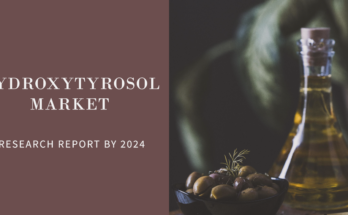In 2018, the U.S. cemented its place as the largest producer of crude oil in the world. As many as 32 states in the country and offshore waters in its territory produce crude oil. However, a significant amount of crude oil is produced across the states of Colorado, Alaska, North Dakota, New Mexico, and Texas.
Among the companies producing crude oil, the majority consists of independent producers that operate exclusively in the U.S. Most of the other companies, such as ExxonMobil and Chevron, are categorized as leading oil companies. These companies have a global presence and also employ thousands of professionals. Fact.MR, in this blog, presents a comprehensive study on the challenges faced by leading companies producing and transporting crude oil across the U.S.
2022: A Year of Uncertainties
In March 2022, oil was trading at almost US$ 140 per barrel, which almost equalled the all-time record of US$ 147.27 recorded in July 2008. This development was a result of Russia launching its “special operation” in its near neighbours Ukraine.
However, fast forward to the latter stages of 2022, and the scenario is completely different. Since the halfway point of the year, the U.S. crude oil market has registered a consistent decline. According to leading economists, this decline has been driven by high energy costs, witnessing an upwind in the market and decreased sales of crude oils.
December 2021 saw Brent futures recording US$ 78.98 as the closing low of the year. However, as the end of 2022 approaches, it was already settled below the 2021 closing low at US$ 77.17. The West Texas Intermediate (WTI) crude has also recorded a decline and is hovering just over the US$ 72 mark. While the first week of December did see U.S. crude oil prices increase marginally due to the Keystone pipeline leak, economists are of the opinion that it’s only a temporary gain.
The declines are worrying, especially when the global backdrop for crude oil prices is supportive to say the least. China’s easing of anti-COVID restrictions, for instance, has resulted in increased crude oil imports in the country. At the same time, Russian oil exports may soon be reduced due to a price cap implementation by G7 nations such as Canada, France, Germany, U.K., U.S., Japan, and Italy
Worsening Economy Expected by Top U.S. Banks and Its Impact on Crude Oil
Leading banks in the U.S. such as JPMorgan Chase & Co, Bank of America, and Goldman Sachs are expecting the economy to worsen in 2023. The primary threat is rising inflation, which is threatening the demand. This is the reason for the decline that the U.S. crude oil market has registered during the second half of 2022.
Jamie Dimon, the CEO of JPMorgan Chase & Co, is of the opinion that, both, companies and consumers are in relatively good shape right now. However, in 2023, he expects things to change as the economy is slowing down rapidly, which is likely to erode consumers’ purchasing power and trigger a recession.
Dimon also stated that the excess savings generated through stimulus programs during the COVID-19 may run out by the FQ-2023. He also warned that the expected 3 – 6-month pause of the Federal Reserve after increasing benchmark interest rates may be insufficient for curbing high inflation.
At a financial conference of Goldman Sachs, Brian Moynihan, the CEO of Bank of America, said that the growth during the first half of 2023 would be “negative” according to research carried out by the bank. However, Moynihan said that the negative growth would only result in a mild economic contraction. David Solomon, the CEO of Goldman Sachs, also expressed similar views in the conference. He revealed that the bank’s clients are “cautious”. Solomon also revealed how some U.S. banks such as Citigroup and Morgan Stanley are reducing their respective workforces.
These revelations from some of the leading figures in the U.S. economic sector offer insights into how the short term future of the crude oil market is likely to suffer. Growing inflation and increasing cautiousness among buyers are the two major challenges that the U.S. crude oil market has to contend with at present.
The U.S. Crude Oil Market’s Leading Lights
ExxonMobil, Chevron, and ConocoPhillips rank among the leading U.S. crude oil companies.
- ExxonMobil: Headquartered in the city of Irving in the state of Texas, ExxonMobil is the biggest publicly traded international gas and oil company. John D. Rockefeller established the company in 1999. In December 2022, the company announced the commencement of operations at its newly-established polypropylene production plant in Louisiana’s Baton Rouge. The plant, located on the country’s Gulf Coast, was originally set to begin its operations in December 2021.
- Chevron: Chevron is based out of San Ramon in the state of California. The company’s origins date back to the late 19th century. Since then, it has gone through numerous mergers to become what it is today. In February 2022, Chevron announced that it would acquire Renewable Energy Group shares in a US$ 3.15 Bn all-cash transaction.
- ConocoPhillips: ConocoPhillips has its headquarters in Houston, Texas, and the company is ranked among the biggest independent energy companies on the planet. Frank Phillips established the company in 1875, and its success over the years has seen it expand to the Asia Pacific, Africa, Europe and the Middle East. In May 2022, ConocoPhillips announced that Jack Harper would replace Tim Leach as the company’s executive vice president and Leach would assume the role of advisor to the CEO.
The Way Forward!
Fact.MR, a leading market intelligence company, expects the U.S. crude oil market to experience volatility in the near future due to economic uncertainties. However, in the long run, the market should bounce back once measures have been taken to keep the inflation in check. A mild recession is not likely to hinder the market’s long term growth.
The experts at Fact.MR acknowledge that the severity of the impending economic crisis is difficult to predict due to the volatile geopolitical and socioeconomic circumstances around the world right now. For the sake of the U.S. crude oil market, it’s only fair to hope that things will soon be back on the path of growth and progress.



